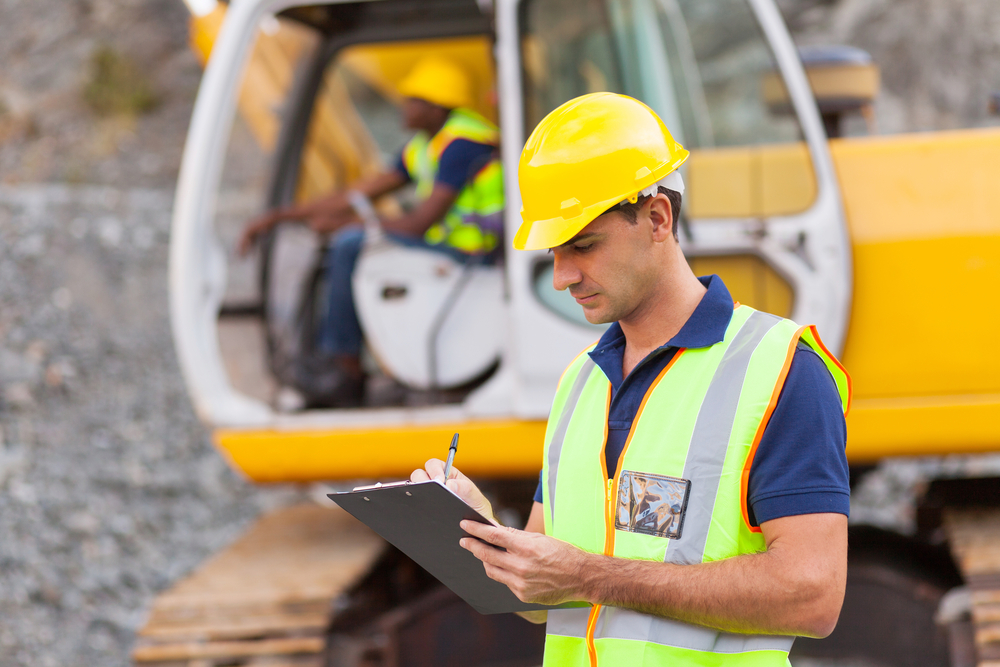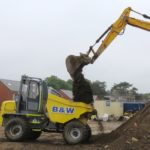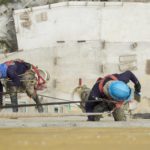Sector - Health & Safety
Improving physical on-site safety by creating psychological safety

In a high-hazard sector like construction, safety and health rightly remain very emotive topics. How individuals think and feel really matters: it motivates them into action, and is therefore closely tied to how a team operates and how tasks are performed. Too often within construction, however, workers don’t feel that the organisational culture – the psychological environment – is safe enough for them to act on these emotions.

Steve Holliday
Despite organisations adopting policies telling employees they should raise safety concerns, there is a disconnect between the theoretical ideal and how this actually works in reality. What’s preventing employees from speaking out and taking ownership, and how do we combat this so that accidents can be reduced?
When it comes to being safe, psychologist Abraham Maslow pointed out that after our first basic needs to breathe, be fed, watered and warm, the next most basic need is physical and psychological health and safety. To fully address physical safety in high hazard workplaces, we need to enable these workplaces to be safer psychologically. Can employees really say what they think, and act to change things? Do they feel secure that they will be supported and rewarded, not penalised?
In recent years, a lot of effort has been made in this area in various construction organisations around the world. They invite site teams and local leaders to understand the choices they make each day on safety, to be more open, and to feel safe to report anything they perceive to be a safety risk.
Whilst this empowerment may have been given, there is often a disconnect when it comes to implementing it in practice by the very people it has been bestowed upon. Organisations need to examine the extent to which this so-called empowerment is actually being lived, even during the most constrained of programme deadlines and complexity of works.
Following any serious near miss, incident or accident, emotions can be high and wide-ranging. These emotions are a very normal set of human responses to events, and so it doesn’t feel unsafe to vent psychologically; whether that’s through anger, frustration and sadness, or determination and conviction. Alternatively, it may be through a discussion of how obvious it was that an incident of that nature would occur, and subsequent feelings of guilt for not speaking out and acting to change things.
Exploring these emotions pre-incident doesn’t always come as naturally or feel as accepted. It’s important to say that being more tuned in to pre-incident emotions isn’t a form of workforce ‘therapy’: it’s about enabling powerful conversations and feedback loops in safety leadership, and ultimately delivering tangible business results.
The existence of different sub-cultures within the construction sector means that this isn’t easy. Once achieved, however, its effectiveness is obvious. On a recent round of multiple onshore wind installation projects, the creation of a more open and responsive working environment, through safety leadership development work, contributed to a 73% reduction in incidents. It completely shifted management culture in the process.
What are the biggest barriers that cause construction workers to suppress their thoughts and emotions when they’re concerned about safety, even when they’ve been told they should be open?
One very dominant theme that comes through is that of power and influence – and the fear of informal blame and subtle judgement from managers. The worry that they’ll be quietly taken off the project for voicing concerns and ‘sticking out’ can be too great a risk for some workers.
On a recent project, one employee who had safety concerns about some practices that were unsafe, or at the very least not at the standard they should be, was reluctant to raise them as the required solution would delay the project by approximately one week. This is despite having confidence in his local supervisor and site manager that they would be supportive. The real fear was being taken off the job by a more senior local manager, who had a reputation for removing people who interfered too much. Real or not, this emotion prevailed.
In this instance, his organisation had a very powerful safety message from all levels, and had already invested in creating an open, safe culture of challenge and learning. Yet in reality, employee perception from the local leadership impact was that efficiency and productivity were more of a business priority – whatever senior leaders said. This signifies a clear contradiction between expectations of behaviour set from the very top, and those set by the people who oversee the day-to-day work.
How do organisations go deeper to really test reality and to make safety leadership even more impactful? And what does exploring emotions at work, pre-incident, actually look like in practice?
The first step is clear – those with power and influence in organisations must work harder to develop Maslow’s psychological safety. This work needs to be upheld as valuable and imperative, starting with them paying attention to their own leadership behaviours, whatever level of a hierarchy they are at.
Directors undoubtedly need to do this – and this is where the majority of existing work has been centred – however, it is crucial that those executing work on a day-to-day basis develop this craft as well. Project managers, construction managers and site managers are the ones with local power and influence, and it is their responsibility to improve physical safety by creating psychological safety.
The second, and more structured, means of promoting openness and testing reality is by creating regular action learning groups, where all the key players in a team, including all key managers, have the opportunity to really examine what’s working in reality, and what needs to change.
In the example of the multiple onshore wind installation projects which saw a 73% reduction in incidents, key leaders from front-line leads to site managers, project managers and directors were held in peer groups for two years. They examined their own leadership behaviour and its impact on safety, as well as other performance measures. This was supplemented with site visits to test this out in reality, with all the key local players.
The aim of this work is to enable speaking up and taking action to become normal pre-incident, in the same way it is following an accident. The core task of leaders is to enable employees to choose to voice concerns when they know something is wrong or unsafe, and to know they can act to change it. Sharing what people think and feel is a vital part of this. This organisational development enables sites to be safe psychologically and, ultimately, physically.
Steve Holliday is a director at organisational change consultancy, Lacerta Consulting.
If you would like to read more articles like this then please click here.
Related Articles
More Health & Safety News
- Government finalises RAAC removal programme
18 Nov 25
Definitive timeline for the complete removal of Reinforced Autoclaved Aerated Concrete (RAAC) from all affected
- Construction mental health consultation
29 Oct 25
The Construction Leadership Council (CLC) has launched a mental health in construction consultation.
- “Serious gaps” found in protecting workers from excessive noise
3 Oct 25
Three-quarters of noisy workplaces lacked essential knowledge on maintaining hearing protection equipment, inspections have found.






